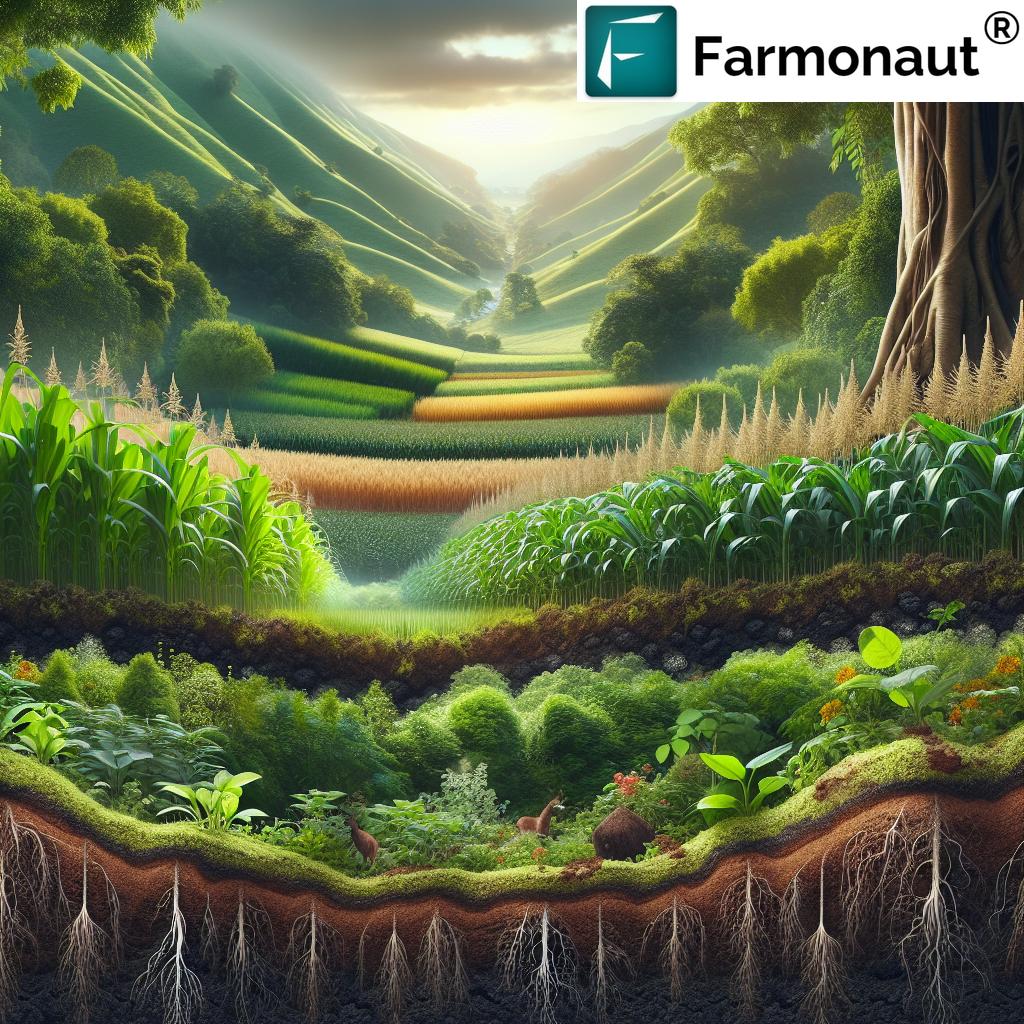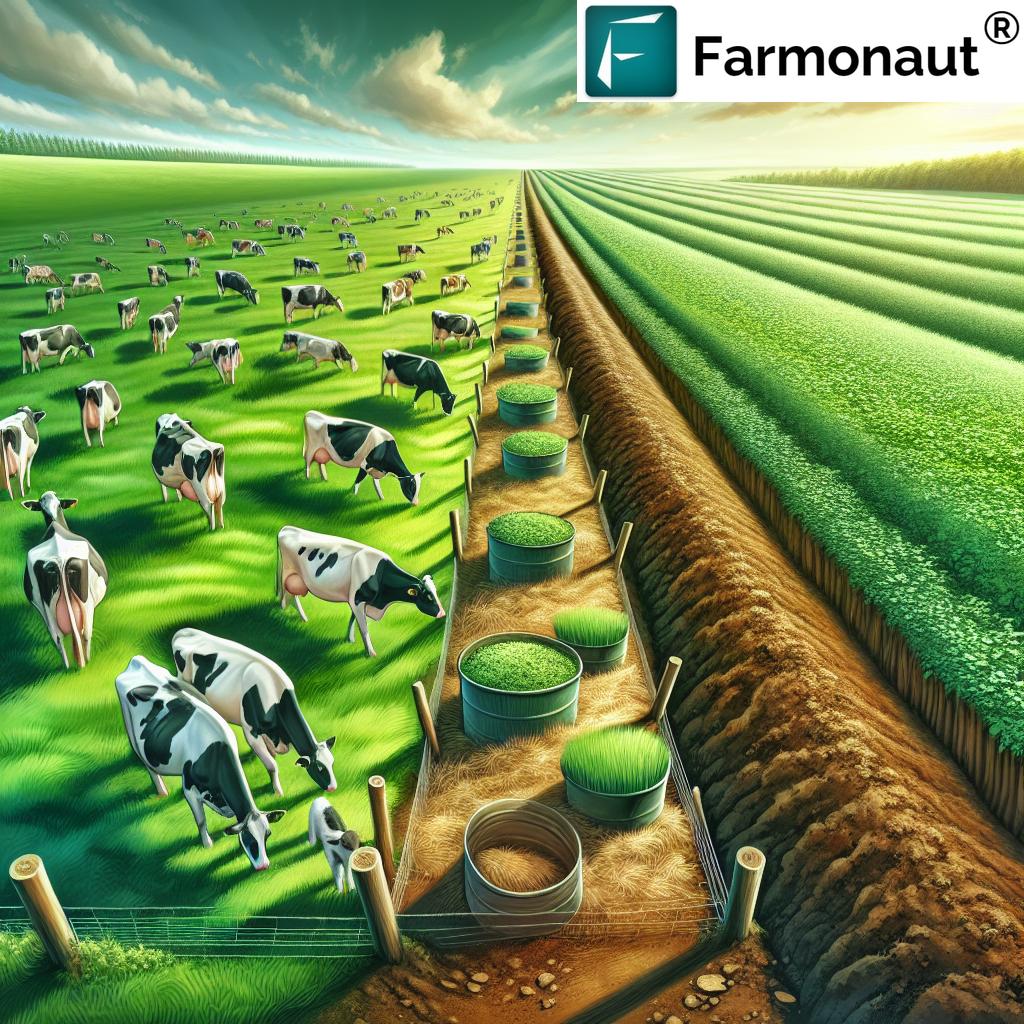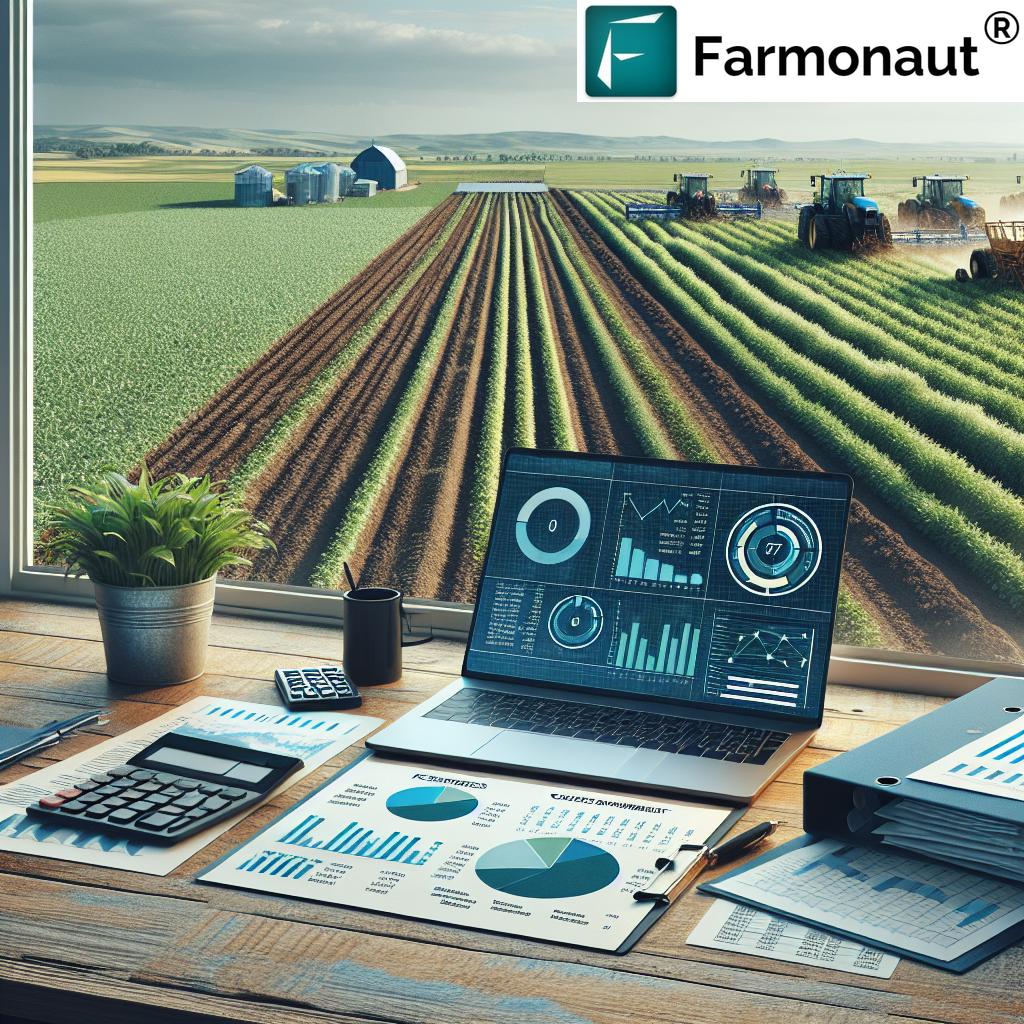Best Pest Control 2026: Powerful Solutions & Cost Guide
Introduction: Best Pest Control for 2026
Pest control remains a critical component in modern agriculture, forestry, and allied sectors such as mining infrastructure. As we move into 2026 and beyond, advancements in pest control strategies and technologies are enabling professionals to protect valuable crops and forests more efficiently, economically, and sustainably. In this comprehensive guide, we will explore the best pest control solutions for 2026, covering cost-effective innovations, integrated management practices, professional services, and actionable insights for reducing pest control costs in agriculture and forestry.
Whether facing outbreaks of insects, fungi, weeds, or rodents, adopting a modern, sustainable approach to pest management is essential. Integrated Pest Management (IPM), technology-driven monitoring tools, and eco-friendly methods are now the gold standard, cultivating higher agricultural productivity with minimized environmental impact.
Focus Keyword: best pest control
Understanding Pest Control in Agriculture and Forestry
The pest control landscape is shifting. In 2026, the focus is on understanding pests at every level—tracking their populations, identifying significant threats, and factoring in crop, forestry, and even mining context. Let’s delve into what makes pest control such a critical component for modern operations:
- Agricultural Impact: Insects (like aphids, thrips, beetles), fungi (downy mildew, rusts), weeds, and rodents can decimate crops, reduce yields, and threaten food security.
- Forestry Threats: Pests such as bark beetles, caterpillars, and harmful ants damage seedlings, weaken forest ecosystems, and disrupt natural balance.
- Infrastructure & Mining: Facilities face infestations from termites, rats, and insects that destroy structures, disrupt operations, and increase maintenance costs.
- Environmental & Economic Effects: Unchecked infestations result in crop and forest losses, escalating input costs, and sometimes, severe environmental harm from indiscriminate chemical use.
Understanding pest control in 2026 means recognizing the need for targeted, integrated, and sustainable practices—especially with the rise of regulations demanding reduced pesticide applications and improved environmental compliance.
“In 2025, eco-friendly pest control solutions can reduce pesticide use by up to 40% in modern agriculture systems.”
Best Pest Control Practices in 2026
Today’s best pest control practices reflect a paradigm shift from blanket chemical use towards a holistic, data-centric approach.
Key Elements of Modern Integrated Pest Management (IPM)
- Monitoring: Regular surveillance of pest populations with thresholds for action. Continuous monitoring reduces unnecessary interventions.
- Prevention & Resistance Management: Crop rotation, resistant varieties, and disruption of pest lifecycle all help.
- Biological Controls: Promoting natural predators (ladybirds, parasitic wasps, predatory beetles) and deploying biopesticides derived from natural substances.
- Precision Chemical Applications: Judicious use of chemical pesticides—only when necessary and always targeted to avoid building resistance.
- Cultural Controls: Sanitation, timing of planting/harvest, and careful irrigation/fertility practices.
- Physical/Mechanical Controls: Barriers, smart traps, mulching, and soil solarization.
Integrated Pest Control: Lowering Costs, Reducing Environmental Impact
The IPM approach remains the gold standard because it:
- Reduces chemical residues and environmental impact
- Is safe for beneficial insects, bees, and wildlife
- Enhances sustainability for certification and consumer trust
- Allows farmers to minimize costs with focused, data-driven interventions
Innovation & Technology: Driving Modern Pest Control
Technological innovations are redefining what’s possible in modern pest control. The ability to monitor, identify, and even predict pest outbreaks transforms response time, cost-effectiveness, and overall outcomes. Key advancements enabling professionals in 2026 include:
Key Technological Tools
- Drones & Satellite Surveillance: Drones enable rapid, high-resolution observation, while satellite-based tools, like those provided by Farmonaut, detect and map pest outbreaks at field and regional scale.
- AI-Powered Pest Detection: Artificial intelligence now analyzes digital imagery to identify pest species, forecast outbreaks, and provide real-time decision support—from identifying aphid hotspots to recognizing early fungal symptoms.
- Smart Traps & IoT Devices: Connected traps with remote data feeds facilitate timely and targeted interventions.
- Precision Spraying Technology: Smart sprayers reduce pesticide use by up to 70% by targeting only infested areas, rather than blanket application.
- Blockchain Traceability: Technology for tracking and verifying products from field to market, ensuring compliance with residue limits.
Learn how Farmonaut’s traceability technology brings transparency and trust to agricultural pest management supply chains
With Farmonaut’s satellite-driven analytics, governments, farms, and businesses get precise, actionable insights for pest monitoring, optimizing control measures, and complying with environmental regulations.
Explore Farmonaut’s API for custom integrations with pest monitoring and resource management tools:
Farmonaut Satellite API | Developer Docs
Eco-Friendly & Biological Pest Control Strategies
As environmental impact becomes central to agricultural and forestry operations, eco-friendly pest control and biological methods take the spotlight in 2026.
Top Eco-Friendly Strategies
- Biopesticides: These derived natural substances—from neem, bacteria (like Bacillus thuringiensis), or fungi—target pests while sparing beneficial insects and minimizing residues.
- Introduction of Predators: Lady beetles, green lacewings, and parasitoid wasps introduced into the ecosystem to control aphids, caterpillars, and scale insects.
- Pheromone Traps: Chemical signals confuse pest mating cycles or attract insects into smart traps, reducing populations non-toxically.
- Organic Mulching: Suppresses weeds and creates habitat for beneficial organisms.
- Habitat Management: Cultivating flowering strips, native vegetation, and buffer zones to maintain biodiversity.
- Mechanical & Cultural Techniques: Soil solarization, flame weeding, manual removal—suitable for small and organic farming operations.
In organic and high-value crops, these methods minimize residues and support sustainable labels.
Ant Pest Control: Challenges and Effective Solutions
While ants can play positive roles in ecosystems, ant infestations are, in many cases, a formidable pest problem—damaging seedlings and farming harmful pests like aphids.
Why Ants Are a Unique Pest Challenge
- They protect sap-sucking pests (aphids, scales) from natural enemies.
- Underground nests damage roots and disrupt soil structure.
- Traditional control using insecticides may be ineffective or harm beneficial fauna.
Modern Ant Pest Control Methods (2026)
- Pheromone-Based Repellents: Target ants’ communication system, deterring them from crops with no toxic residues.
- Baiting with Low-Toxicity Gel: Precision baits reduce non-target impacts, interfering with ant colony viability.
- Biological Controls: Entomopathogenic fungi and nematodes attack ants without affecting other beneficial insects.
- Habitat Disruption: Strategic soil disturbance, combined with mulching, disrupts nest formation.
- Inclusion in IPM: Early surveillance and ant-specific monitoring prevents escalation of ant-related infestations.
Check out detailed ant and aphid IPM in this guide!
Pest Control Cost Guide & Pro Pest Control Services
Pest control costs in 2026 are driven by scale of operations, pest species, and control methods employed. While technological tools are increasingly affordable, professional (pro) pest control services offer customization, efficiency, and compliance support that justifies their cost, especially for large farms, forestry sites, and commercial operations.
Key Factors Affecting Pest Control Cost
- Scale: Per acre costs decrease for larger fields or forests due to efficiencies of scale.
- Type of Pest: High-resistance or invasive pests require more sophisticated solutions.
- Methods Used: Biological controls and precision tech may have higher upfront costs but reduce long-term expenditure by lowering repeated pesticide applications.
- Labor & Monitoring: Automated tools (Smart traps, satellite analytics) reduce human labor costs.
- Pro Services Value: Professional pest controllers provide expertise in risk assessment, treatment, and post-treatment monitoring, minimizing crop losses and avoiding regulatory penalties.
For farmers and operators, investing in pro pest control can result in:
- Higher, more stable yields
- Reduced pesticide purchase and application costs
- Improved compliance for export and food safety
- Lower environmental impact
For operators looking to maximize returns on their investment, Farmonaut’s real-time monitoring provides the data foundation for direct, precision interventions. This means less guesswork, optimal pesticide application, and measurable savings for both smallholder and large-scale agriculture.
Discover Farmonaut’s large-scale farm management software for streamlined pest and resource tracking
Comparative Solutions & Cost Analysis Table
| Pest Control Solution/Technology | Estimated Cost per Acre (USD) | Effectiveness (%) | Sustainability Rating (1-5) |
Application Frequency (per season) |
Suitable Crops/Forestry Types |
|---|---|---|---|---|---|
| Biological Controls (Predators) | $30–$55 | 70–85% | 5 | 1–2 | Vegetables, Orchards, Forest Plantations |
| Precision Spraying (Smart Tech) | $35–$75 | 80–90% | 4 | 1–3 | Row Crops, Grain, Forestry |
| Pheromone Traps | $25–$40 | 65–80% | 5 | 2–4 | Fruit, Cotton, Specialized Forestry |
| AI-Driven Monitoring (Satellite/Drones) | $15–$35 | Varies (as a decision support tool) | 5 | Ongoing | All Crops, Forest, Infrastructure |
| Organic Pesticides (Biopesticides) | $38–$60 | 60–78% | 5 | 2–4 | Vegetables, Organic Fields, Sensitive Forest Zones |
| Traditional Chemical Pesticides | $20–$55 | 85–95% | 2 | 2–4 | Wide Range: Field Crops, Forestry, Mining Facilities |
This comparative table gives an at-a-glance cost and benefit analysis, underpinning why operators are increasingly adopting integrated and eco-friendly pest control in 2026.
All Pest Control: Comprehensive, Sustainable Management Solutions
Best practices for all pest control in 2026 integrate solutions across pests, diseases, and weeds to maintain crop and forest health without compromising environmental integrity.
- Proactive Monitoring: Continuous monitoring alerts for early intervention, saving money and avoiding major outbreaks.
- Systemic Perspective: Recognize pest problems are part of complex ecosystems; controlling one pest in isolation might exacerbate others.
- Multifaceted Strategies: Combine biological, chemical, and cultural methods for durable results.
- Smart Technology Integration: Farmonaut’s real-time analytics underpin decision-making for facility and infrastructure pest management in forestry and mining.
- Regulatory Compliance: Automated monitoring facilitates certification processes (organic, eco-label) and export standards.
Farmonaut: Satellite-Based Precision Pest Control Solutions
As we look to 2026, satellite technology is a game-changer for precision pest control in agriculture, forestry, mining, and infrastructure. At Farmonaut, we are dedicated to empowering farmers and industry professionals with a unique suite of remote-sensing and AI-driven services:
- Satellite-Based Monitoring: Real-time, high-resolution analysis of vegetation health (NDVI), soil conditions, and structural integrity. Enables direct, targeted interventions for pest outbreaks.
- AI Advisory System (Jeevn AI): Delivers weather, risk, and pest management guidance, driven by geospatial analytics for tailored recommendations on each field and crop.
- Blockchain Traceability: Ensures every phase of the supply chain meets environmental and food-safety standards, minimizing compliance risk and improving market access for sustainable producers.
- Environmental Impact Tracking: Monitor and reduce the carbon footprint and chemical input associated with traditional pest control methods, supporting environmental reporting.
- Fleet & Resource Management: Optimize logistics, reduce operational costs, and schedule precise pest management operations with data-backed vehicle and machinery monitoring.
We make advanced pest control analytics affordable to all—streamlining costs, supporting sustainable certifications, and empowering decision-making from smallholders to industrial-scale businesses.
“Advanced sustainable practices cut pest management costs by 30% for forestry operators compared to traditional chemical methods.”
Frequently Asked Questions (FAQ) on Best Pest Control 2026
-
What is the most effective pest control method in agriculture for 2026?
Integrated Pest Management (IPM), which combines monitoring, eco-friendly biological controls, targeted pesticide applications, and technology-driven tools, is the most effective and sustainable approach. -
How can farmers reduce pest control costs sustainably in 2026?
By using satellite-based crop monitoring, precision spraying, and AI decision-support systems, farmers can target interventions, avoid unnecessary pesticide use, and cut overall management costs by up to 30%. -
Why is ant pest control important in forestry and agriculture?
Ants often protect harmful pests like aphids, disrupt beneficial insect populations, and damage plant roots. Effective ant pest control strategies—such as pheromone-based repellents and biological controls—mitigate these problems without harming beneficial organisms. -
Which crops benefit most from biological pest control?
High-value crops like fruits, vegetables, and organic fields benefit greatly from biological controls, as these methods minimize chemical residues and support eco-certifications. -
How do professional pest control services add value?
Pro pest control services bring specialized expertise, risk assessment, post-treatment monitoring, and technology integration, leading to higher yields, better compliance, and reduced long-term costs. -
Can satellite monitoring be used in forestry pest management?
Yes, satellite-based tools provide large-scale forest health, pest outbreak detection, and support timely, targeted pest management interventions—especially valuable in remote or expansive forest tracts. -
What are the latest regulations regarding chemical pesticide use?
Most regions are tightening residue limits and increasing reporting requirements. Integrated and eco-friendly pest management methods ensure safe compliance and open doors to high-value export markets.
Conclusion: Future-Proof Pest Control for Agriculture and Forestry
As we approach 2026, best pest control strategies are characterized by precision, integration, and sustainability. Leveraging technological tools alongside eco-friendly methods empowers farmers, foresters, and industry professionals to protect productivity, reduce costs, and safeguard environmental health.
Whether you operate a small farm, a commercial forestry enterprise, or a critical mining infrastructure, embracing comprehensive pest management—with continuous monitoring, pro pest control services, and advanced analytics—will be key in minimizing losses and meeting the rising demand for sustainably produced crops and forest products.
We at Farmonaut are committed to making satellite insights and data-driven agricultural solutions available and affordable to all, powering the next generation of pest control and sustainable management.
Farmonaut Subscriptions
Modern pest control in 2026 is smarter, greener, and more cost-effective than ever before. Start your journey to sustainable agriculture and forestry today with the right tools and expert guidance!













